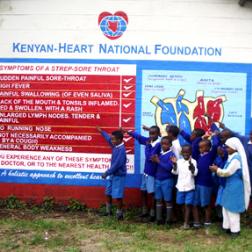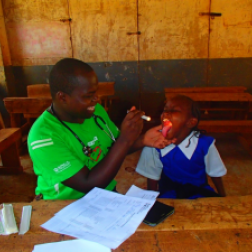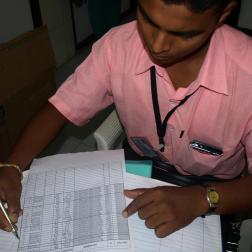Q&A with Dr. Nazgul Omurzakova

The Kyrgyz Republic – or Kyrgyzstan – is a mountainous, landlocked country in Central Asia, with a population of around 5.7 million people. A 2009 study found that the Kyrgyz Republic had a high prevalence of rheumatic fever (RF) and rheumatic heart disease (RHD), a situation made worse following an economic downturn after the collapse of the Soviet Union, which caused a corresponding decline in public health.
Dr. Nazgul Omurzakova is a Senior Research Assistant and Clinical Doctor at the National Center of Cardiology and Internal Medicine in Bishkek, the capital of the Kyrgyz Republic. Additionally she is the Academic Secretary of the Academic Council of the national Ministry of Health. She joined us for a quick Q&A about the types of patients she sees in her clinic, the burden of RHD in Kyrgyzstan, and the programmes that have been implemented to address this burden.
How would you describe the patients you see at your clinic in Bishkek?
We receive patients of all ages: however most commonly we see young patients between the ages of 15-40 years old, primarily from the countryside.
Historically, what services were available to people in Kyrgyzstan who were suffering from RHD?
The system of RHD services in Kyrgyzstan – which included a nursery – was established in the 1970s and included national centers and clinics, some of which specialized in rheumatic diseases. The positions of ‘rheumatologist’ and ‘children’s cardio-rheumatologist’ were entered into the list of medical specialisms in the country.
#RHD & RF increase in Kyrgyzstan after the USSR fall. Disease of poverty & social/political instability? #WCCMexico pic.twitter.com/OdF7ZFE1Y6
— Bistra Zheleva (@bzheleva) June 7, 2016
Today, unfortunately, there are no RHD experts among family physicians in regional and district hospitals and no specialized branches in these areas, which is a situation we need to rectify.
Currently in our clinic we offer diagnosis and treatment to those who present with symptoms of RHD, and observation and management of people with RF or RHD.
What is the status of RHD in the Kyrgyz Republic since the 1990s?
In the last 15-20 years, we have seen an increase in the number of infectious diseases and their complications in Kyrgyzstan; among these we can count streptococcal pharyngitis and as a consequence, rheumatic fever.
The current epidemiological situation and prevalence of RF is a source of serious concern: RF and RHD are an increasingly common cause of mortality and early invalidity of young generations. This is not only traumatic for families and communities, but also has a significant, negative economic impact on the country.
Our burden of RF in particular is high: a study we conducted in 2009 found Kyrgyzstan’s prevalence to be 643 cases per 100,000 individuals, a very high rate among all developing countries worldwide.
What work is underway to tackle the burden of RHD in the Kyrgyz Republic?
In 2010 we launched a programme, ‘Hearty Smile on the Silk Road’, to increase national action to tackle rheumatic fever and rheumatic heart disease.
Dr Omurzakova presents an interesting perspective on current and future prospects on RHD in #Kyrgyzstan #WCCMexico pic.twitter.com/xbSOjSz6Zt
— RHDAction (@RHDAction) June 7, 2016
We carry out a number of different activities as part of this project: we conduct expeditions to the high mountain regions in order to study the prevalence of group A streptococcus (GAS) by rapid test, and also to study the true spread of RF/RHD by Echo (Ultrasound diagnostic) among the population, especially in children and adolescents.
Our preventive work on RF/RHD for this programme includes small information campaigns, such as briefings for local doctors, brief workshops for local inhabitants and administrators, and the dissemination of leaflets.
Additionally, we analyze and maintain research data, and conduct fundraising activities so that we can continue our activities to prevent and control RF and RHD.





